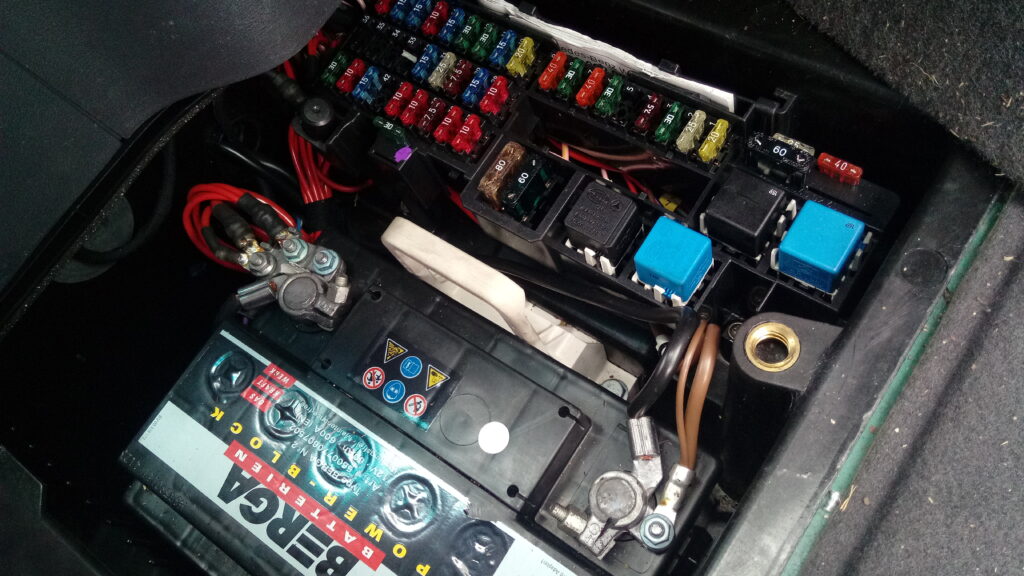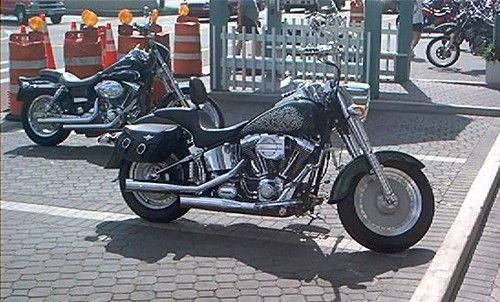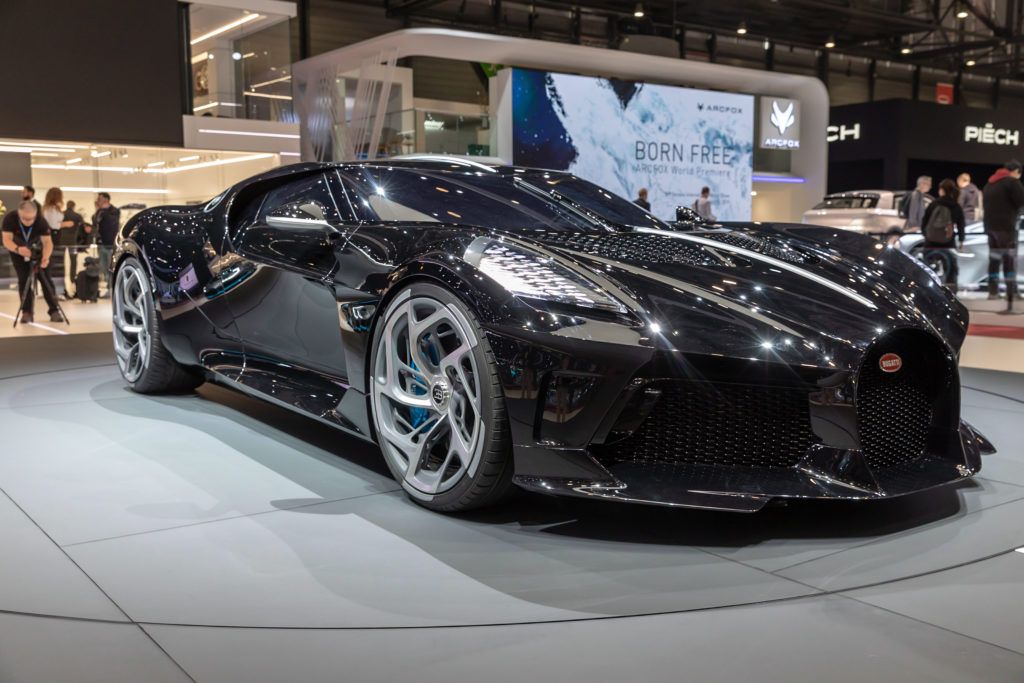
Rare cars captivate enthusiasts and collectors like few other possessions can. From their rich automotive heritage and intricate history to the meticulous craftsmanship behind each individual component, these ultra-exclusive vehicles offer far more than just raw horsepower and high-end materials. They embody iconic milestones in design, engineering, and cultural impact, representing the very pinnacle of automotive achievement.
In 2025, the global vintage car market continues its extraordinary flourish, with prices consistently climbing to breathtaking new heights and fresh auction records being set with remarkable regularity every year. Whether your interest lies in exploring classic car auction trends to potentially invest in a limited-edition supercar, or you simply revel in reading about the fascinating world of exotic car collecting, this guide promises an unparalleled journey. We bring you some of the rarest and most valuable cars on the planet, offering an updated look at their astonishing costs today.
Indeed, there are rare cars, and then there are *these* cars. You don’t simply acquire them; often, they are inherited, tracked like precious folklore, or bestowed upon individuals by a billionaire automaker with a bespoke key fob. Each machine on this list, be it a one-off Bugatti with a name straight out of film noir or a 1950s racecar seemingly carved by the gods, transcends the definition of a mere vehicle—it is a legend, a testament to what happens when engineers, designers, and dreamers unite to build the truly extraordinary.
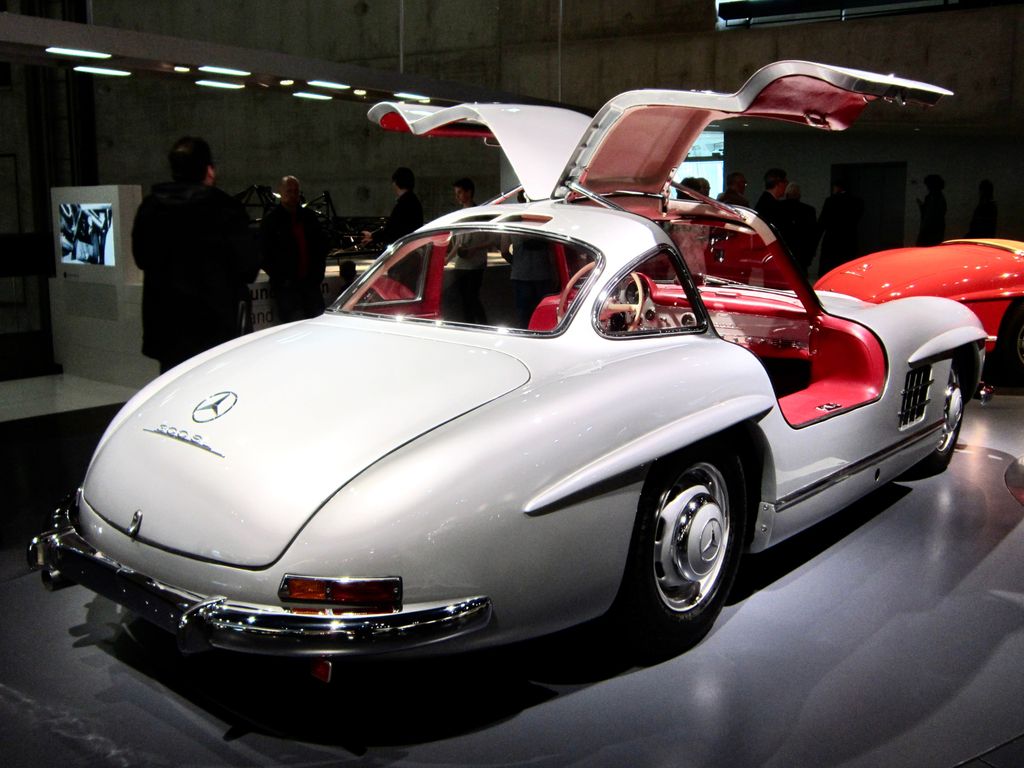
1. **Mercedes-Benz 300 SLR “Uhlenhaut Coupé”**This Mercedes-Benz 300 SLR “Uhlenhaut Coupé” stands as a legendary prototype, seamlessly merging cutting-edge racing technology with the luxurious grand touring format. Developed by the visionary Rudolf Uhlenhaut in the mid-1950s, it remains an undisputed and definitive showcase of German engineering prowess and the enduring brand prestige of Mercedes-Benz. Its very existence speaks volumes about a period when automotive innovation knew no bounds, pushing the limits of what was mechanically and aesthetically possible.
Its rarity is almost as legendary as its performance, with only two examples ever built, solidifying its position as one of the rarest vehicles in Mercedes-Benz’s storied history. This exceptional scarcity, combined with its unparalleled design and performance capabilities, propelled it into global headlines. It captured immense attention in 2022 when it commanded an astonishing private sale price of EUR 135 million, which translates to well over USD 140 million at current exchange rates.
Looking ahead to 2025, automotive experts firmly believe that this already mind-boggling figure could soar even higher, cementing its status as a leading contender for the title of the most expensive car in existence. To merely glimpse this machine is a profound privilege, as it is only occasionally displayed at the esteemed Mercedes-Benz Museum in Stuttgart, Germany, and is seldom loaned out due to its extreme, indeed almost incomprehensible, value.
Car Model Information: 2017 Toyota Camry SE
Caption: Mercedes-Benz Museum
CarName: Mercedes-Benz 300 SLR
Category: World Sportscar Championship
Constructor: Mercedes-Benz in Formula One
Team: Mercedes-Benz in Formula One
Drivers: flagicon,Stirling Moss,flagicon,Pierre Levegh
EngineName: Mercedes-Benz M196 engine
Configuration: straight-8
Capacity: 2982 cc
Abbr: on
EnginePosition: front-mid
GearboxName: Daimler-Benz
Type: 5-speed transaxle gearbox
FrontSuspension: Double wishbone, torsion bar springs, telescopic shock absorbers
RearSuspension: Single-joint swing axle, longitudinal torsion-bar springs, telescopic shock absorbers
Fuel: Super petrol (98 RON)
Tyres: Continental AG
Debut: 1955 Mille Miglia
Designer: Rudolf Uhlenhaut
Categories: 24 Hours of Le Mans race cars, All articles with unsourced statements, Articles with short description, Articles with unsourced statements from May 2023, Automobiles with gull-wing doors
Summary: The Mercedes-Benz 300 SLR (W 196 S) is a two-seat sports racing car that took part in the 1955 World Sportscar Championship before a catastrophic crash and fire at Le Mans later that year ended its domination prematurely. The car was designated “SL-R” (for Sport, Leicht, Rennen, eng: sport, light, racing), which was later condensed to “SLR”. Technically, the W 196 S is based on the W 196 R, but has a slightly different engine, displacing 3 litres.
Just as the W 196 R Formula One racer’s M 196 R engine, the 300 SLR’s M 196 S engine is a direct-injected 3-litre straight-eight engine (but with a 78 mm bore and stroke); its rated power is 302 PS (222 kW).
The W 196 S’s monoposto driving position was modified to standard two-abreast seating, headlights were added, and a few other changes made to adapt a strictly track competitor to a 24-hour road/track sports racer.
Hall of Fame Formula One driver and former Mercedes-Benz team 300 SLR race driver Stirling Moss described the 300 SLR as “The greatest sports racing car ever built – really an unbelievable machine.”
Two of the nine 300 SLR rolling chassis produced (nicknamed the “Uhlenhaut Coupé”) were built as closed coupés. Effectively road legal racers, they had coupé styling and gull-wing doors, superficially resembling the 300 SL production car.
When Mercedes-Benz cancelled its racing programme after the Le Mans disaster, the hybrid project was shelved. Company design chief Rudolf Uhlenhaut, architect of both the 300 SLR racer and the hybrids, appropriated one of the leftover mules as his personal car. Capable of approaching 290 km/h (180 mph), the Uhlenhaut Coupé was by far the fastest road car in the world in its day.
A 1955 Mercedes-Benz 300 SLR Uhlenhaut Coupé has become the most expensive car to ever be sold after being auctioned off for €135 million. The car, previously owned by Mercedes-Benz, was sold by RM Sotheby’s to an unknown collector at the Mercedes-Benz Museum on 5 May 2022.
Get more information about: Mercedes-Benz 300 SLR
Buying a high-performing used car >>>
Brand: Mercedes-Benz Model: 300 SLR
Price: $15,995 Mileage: 41,772 mi.
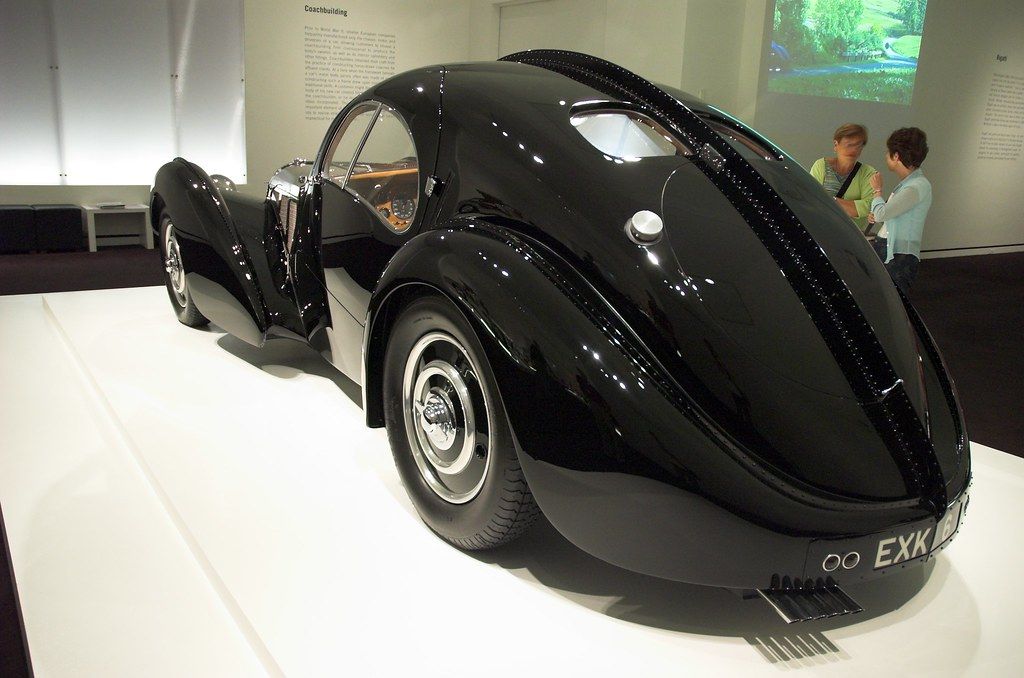
2. **Bugatti Type 57 SC Atlantic**Renowned globally for its profoundly influential design within automotive history, the Bugatti Type 57 SC Atlantic stands as one of the most revered examples of 1930s elegance. Its distinctive, flowing lines and an iconic riveted dorsal seam define its silhouette, with each painstakingly crafted example epitomizing an era of unparalleled exclusivity and art-deco automotive artistry.
Production numbers underscore its extreme rarity; fewer than four were originally built, though some historical debate exists regarding the exact figures due to partial surviving chassis. The inherent value of the Bugatti Type 57 SC Atlantic is almost immeasurable, transcending typical market metrics. However, recent appraisals and whispers from the most exclusive auction circles consistently place its potential value at well over USD 100 million if one were ever to change hands on the open market.
This Art Deco masterpiece is not merely a car; it is a rolling sculpture, a direct testament to an era of unbridled automotive artistry and design philosophy. Its extraordinary scarcity means that only one or two are ever in public circulation for viewing, typically gracing the hallowed halls of high-profile automotive museums or making fleeting, highly anticipated appearances at private showings, leaving a lasting impression on all who witness its grandeur.
Car Model Information: 2017 Toyota Camry SE
Name: Bugatti Type 57
Caption: 1936 Bugatti Type 57 Atalante
Manufacturer: Bugatti
Assembly: Molsheim
Production: 1934–1940,710 produced
Designer: Jean Bugatti
Class: Grand tourer
Engine: DOHC,Straight-8
Predecessor: Bugatti Type 49
Successor: Bugatti Type 101
Categories: 24 Hours of Le Mans race cars, Articles with short description, Bugatti automobiles, CS1 Romanian-language sources (ro), Cars introduced in 1934
Summary: The Bugatti Type 57 and later variants (including the famous Atlantic and Atalante) was a grand tourer built from 1934 through 1940. It was an entirely new design created by Jean Bugatti, son of founder Ettore. A total of 710 Type 57s were produced.
Type 57s used a straight-8 twin-cam engine of 3.3 L (3257 cc/198 in³) displacement. Bore and stroke were 72 mm by 100 mm based on that of the Type 49 but heavily modified by Jean Bugatti, unlike the single cam engines of the Type 49 and earlier models. The engines of the Type 50, 51 used bevel gears at the front of the engine to transmit power from the crankshaft, whereas the Type 57 used a train of spur gears at the rear of the engine, with fiber gear wheels on the camshafts to achieve more silence in operation.
There were two basic variants of the Type 57 car:
The original Type 57
The lowered Type 57S/SC
The Type 57 chassis and engine was revived in 1951 as the Bugatti Type 101. A rediscovered Type 57 was sold for 3.4 million euros at auction on 7 February 2009 at a motor show in Paris.
Get more information about: Bugatti Type 57
Buying a high-performing used car >>>
Brand: Bugatti Model: Type 57 SC Atlantic
Price: $15,995 Mileage: 41,772 mi.
Read more about: Beyond the Garage: 15 Vintage Cars That Are Secretly Skyrocketing in Value Right Now
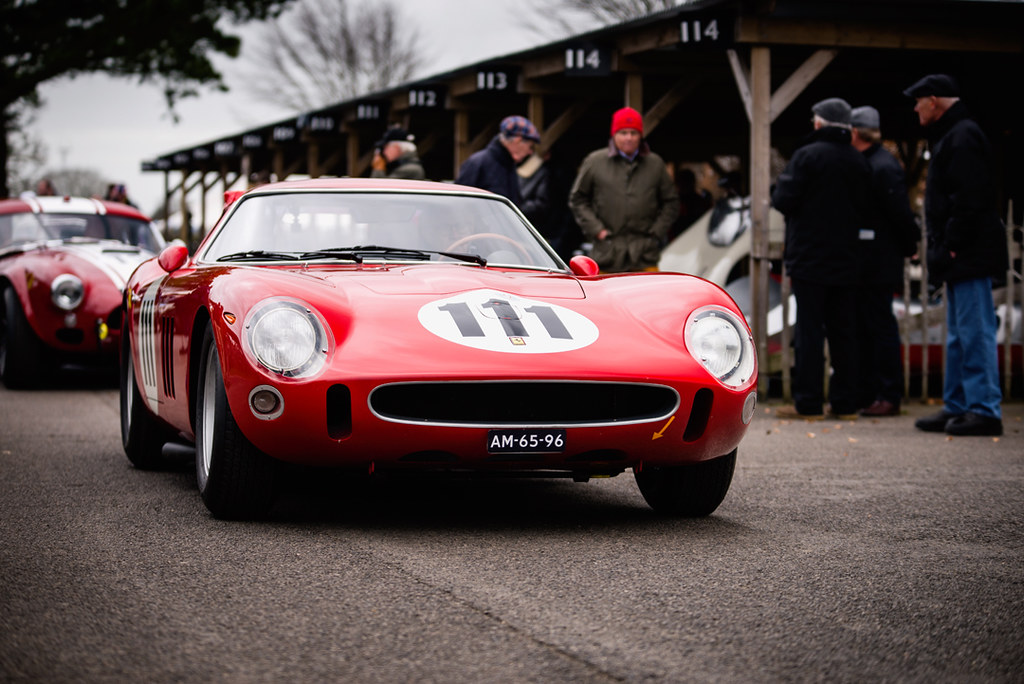
3. **Ferrari 250 GTO**No comprehensive discussion of rare luxury coupes or the absolute pinnacle of automotive collecting would ever be complete without the inclusion of the Ferrari 250 GTO. This machine is often universally hailed as the definitive symbol of prestigious car brands and the ultimate collector’s Ferrari. Built meticulously between 1962 and 1964, the 250 GTO was originally conceived and created for FIA homologation in the highly competitive GT racing class, a purpose it fulfilled with immense success.
Sporting a powerful, naturally aspirated V12 engine, this vehicle is widely considered a masterpiece of design and engineering. It flawlessly blends an exquisite coachbuilt Italian style with uncompromising, race-proven performance, creating a synergy that is rarely matched in automotive history. Its production was exceptionally limited, with only 36 chassis produced, all of which remain highly coveted by enthusiasts and collectors worldwide, making each example a true treasure.
By 2025, the estimated valuation for a Ferrari 250 GTO can easily exceed USD 80 million, a figure heavily influenced by factors such as its matching numbers status and its detailed historical racing pedigree. These unparalleled machines are frequently featured at the most prestigious Concours d’Elegance events globally and reside within the most esteemed private collections, consistently commanding immense respect and unwavering admiration wherever they appear.
Car Model Information: 2017 Toyota Camry SE
Name: Ferrari 250 GTO
Caption: 1963 Ferrari 250 GTO (chassis 4153GT)
Manufacturer: Ferrari
Production: 1962–1964,(36 produced)
Designer: Giotto Bizzarrini,Scaglietti
Class: Sports car
BodyStyle: berlinetta
Related: Ferrari 330#330 LMB,Ferrari P#250 LM
Layout: FR layout
Engine: 2,953 cc,Ferrari Colombo engine#250,Overhead camshaft#Single Overhead camshatf,Weber carburetor,Compression ratio
Powerout: 300 PS
Abbr: on
Order: flip @ 5500 rpm
Transmission: Manual transmission
Wheelbase: 2400 mm
Length: 4325 mm
Width: 1600 mm
Height: 1210 mm
Weight: convert
Predecessor: Ferrari 250 GT SWB
Successor: Ferrari 250 LM,Ferrari 288 GTO
Categories: All articles lacking reliable references, All articles needing additional references, All articles with bare URLs for citations, All articles with unsourced statements, Articles lacking reliable references from March 2022
Summary: The Ferrari 250 GTO is a grand tourer produced by Ferrari from 1962 to 1964 for homologation into the FIA’s Group 3 Grand Touring Car category. It was powered by Ferrari’s Tipo 168/62 Colombo V12 engine. The “250” in its name denotes the displacement in cubic centimeters of each of its cylinders; “GTO” stands for Gran Turismo Omologato, Italian for “Grand Touring Homologated”.
Just 36 of the 250 GTOs were manufactured between 1962 and 1964. This includes 33 cars with 1962–63 bodywork (Series I) and three with 1964 (Series II) bodywork similar to the Ferrari 250 LM. Four of the older 1962–1963 (Series I) cars were updated in 1964 with Series II bodies.
When new, the 250 GTO cost $18,000 in the United States, with buyers personally approved by Enzo Ferrari and his dealer for North America, Luigi Chinetti. This model has since become highly desired by automobile collectors and sales have repeatedly set price records. The current record for world’s most expensive Ferrari was set in June 2018 when a 1963 250 GTO (chassis 4153GT) was sold in a private sale for $70 million.
In 2004, Sports Car International placed the 250 GTO eighth on their list of Top Sports Cars of the 1960s, and nominated it the top sports car of all time. Similarly, Motor Trend Classic placed the 250 GTO first on a list of the “Greatest Ferraris of All Time”. Popular Mechanics named it the “Hottest Car of All Time”.
Get more information about: Ferrari 250 GTO
Buying a high-performing used car >>>
Brand: Ferrari Model: 250 GTO
Price: $15,995 Mileage: 41,772 mi.
Read more about: The Cars That Became Stars: 12 Iconic Vehicles from 70s & 80s TV & Film
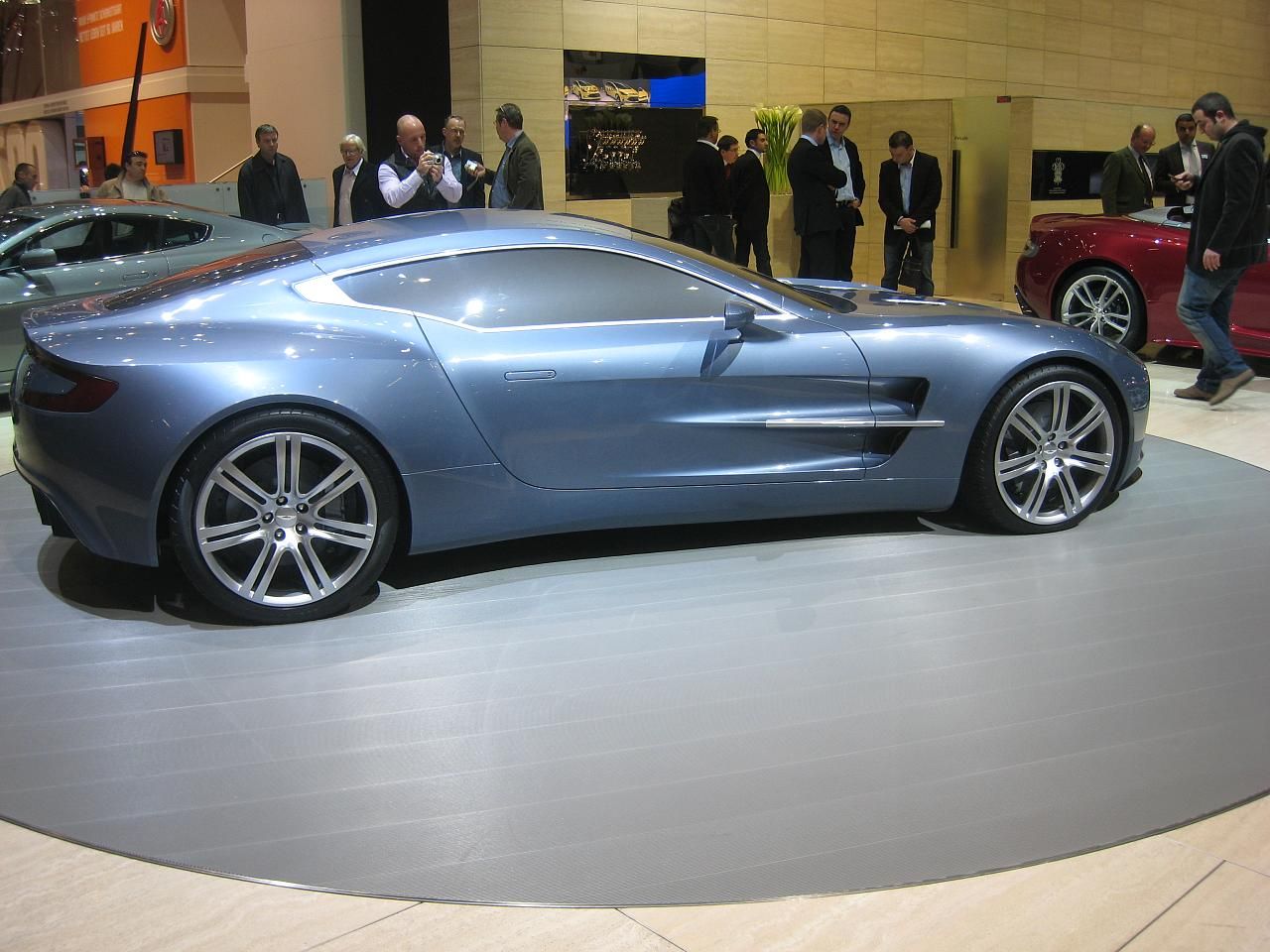
4. **Aston Martin DBR1**As the brand’s very first outright Le Mans-winning car, the Aston Martin DBR1 embodies historical significance in the realm of rare automobiles like few others. Its sleek, aerodynamic bodywork, combined with an undeniable race-winning pedigree, collectively establish it as a truly timeless British sports icon. This vehicle represents a defining moment in Aston Martin’s racing heritage, showcasing their engineering prowess and determination on the world stage.
Only five of these purpose-built sports cars were rolled out by Aston Martin. These extremely limited examples participated in some of the most revered and challenging races in automotive history, culminating in securing an iconic victory at the 1959 Le Mans. This achievement solidified its legendary status, a triumph that echoed through the racing world.
Bloomberg has even called it the most important Aston Martin ever made, highlighting its tube-frame chassis and a sophisticated five-speed transaxle. The Aston Martin DBR1’s auction records have soared dramatically over the years, with one exceptional example selling for over USD 22 million in 2017. By 2025, experts conservatively estimate that a pristine DBR1 could easily fetch USD 30 million or even more, underscoring its enduring value and desirability among collectors. It is occasionally displayed at major classic racing festivals or high-end automotive collectibles showcases, often accompanied by detailed historical documentation, cementing its rightful place in the annals of motorsport history.
Car Model Information: 2017 Toyota Camry SE
CarName: Aston Martin DBR1
Caption: Aston Martin DBR1/5 at Silverstone Classic 2007
Category: 24 Hours of Le Mans#Cars,Sports car racing
Constructor: Aston Martin Lagonda Limited
Designer: Ted Cutting
Team: flagicon,Border Reivers (racing team)
Drivers: flagicon,Reg Parnell
Chassis: space frame
FrontSuspension: Torsion bar suspension
RearSuspension: De Dion tube
Length: 13 ft
Abbr: on
Width: 5 ft
Height: 3 ft
Wheelbase: 7 ft
Track: 4 ft
EngineName: Aston Martin
Power: Convert
Capacity: 2,493 cc / 2,992 cc,
Configuration: Straight six,
EnginePosition: Front-engine, rear-wheel drive layout
GearboxName: David Brown CG537
Gears: 5-speed
Type: Manual transmission
Weight: 1765 lb
Tyres: Avon Tyres#Avon Rubber plc
Debut: 1956 24 Hours of Le Mans
Races: 18,Inc 4 Le Mans
Wins: 9,Inc 1959 Le Mans
ConsChamp: 1 (1959)
Categories: 24 Hours of Le Mans race cars, Articles with hAudio microformats, Articles with short description, Aston Martin racing cars, Commons category link is on Wikidata
Summary: The Aston Martin DBR1 is a sports racing car built by Aston Martin starting in 1956, intended for the World Sportscar Championship as well as non-championship sportscar races at the time. It is most famous as the victor of the 1959 24 Hours of Le Mans, Aston Martin’s only outright victory at the endurance classic. It is one of only three cars in the 1950s to win both the World Sports Car Championship and Le Mans 24 Hours in the same year (the others being the Ferrari 375 Plus in 1954 and the Ferrari 250TR in 1958). In addition the six World Sports Car Championship victories was a record for any car in the 1950s and remained a record in the championship until surpassed by the Ferrari 250TR. The three consecutive triumphs in 1959 at the Nürburgring, Le Mans and the Tourist Trophy equalled the record set by the Ferrari 250TR with its three consecutive victories at the start of the 1958 season.
In August 2017, car DBR1/1 was sold for a world record price for a British-made car of US$22,555,000.
Get more information about: Aston Martin DBR1
Buying a high-performing used car >>>
Brand: Aston Martin Model: DBR1
Price: $15,995 Mileage: 41,772 mi.
Read more about: Journey into Rarity: Uncovering the World’s Most Exclusive Car Engines and Models
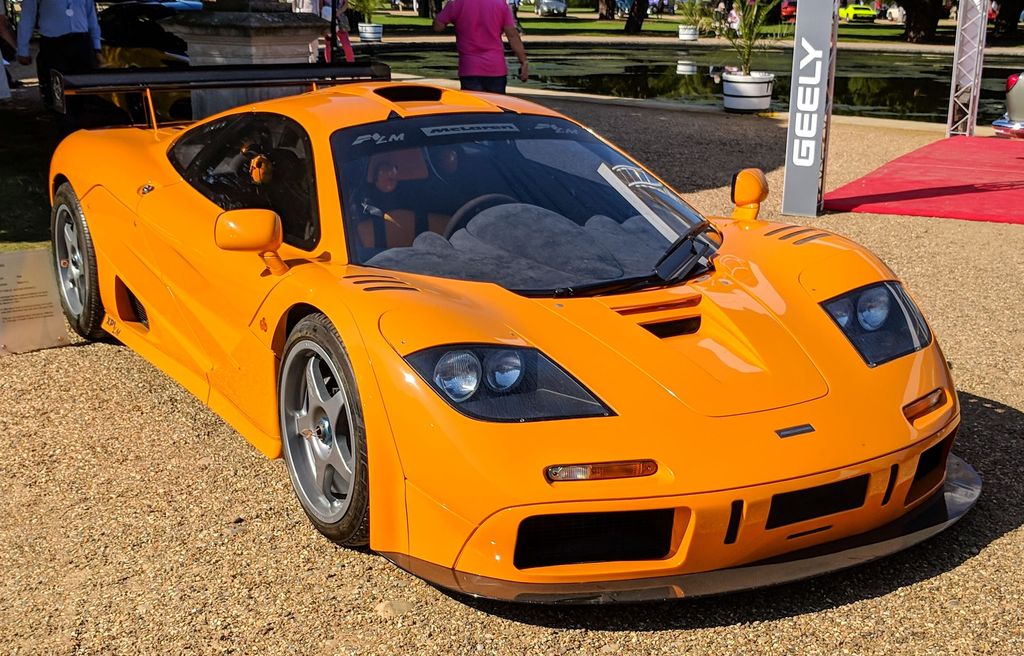
5. **McLaren F1 LM**The standard McLaren F1 is already a legendary supercar in its own right, but the McLaren F1 LM elevates that formidable reputation to an entirely new dimension. This ultra-exclusive variant was meticulously built to honor the brand’s monumental 1995 Le Mans victory, capturing the essence of that triumph in an uncompromising, track-oriented design. It proudly remains one of the fastest naturally aspirated production cars in recorded history, a testament to its engineering purity.
Its rarity is profound; only five F1 LMs were ever built for customers, in addition to a single prototype. All these vehicles feature unique aerodynamic upgrades and boast a significantly lighter build than the already impressive standard F1. The decision to produce these five limited-edition F1 LMs was a direct commemoration of McLaren’s incredible achievement at Le Mans, where their F1 GTRs not only won but also captured the third, fourth, fifth, and thirteenth finishing positions.
The McLaren F1 LM’s market price has soared dramatically, breaching the USD 20 million mark several years ago. By 2025, prices for pristine examples, particularly those with original matching numbers, are expected to breach an astonishing USD 25–30 million. Enthusiasts might be fortunate enough to find one showcased at top-tier Concours d’Elegance events like Pebble Beach, or perhaps at exclusive, invitation-only private hypercar gatherings, a true testament to its unparalleled racing lineage and engineering prowess.
Car Model Information: 2017 Toyota Camry SE
Name: McLaren F1
Caption: McLaren F1 chassis #063, built in 1997
Manufacturer: McLaren Automotive
Production: 1992–1998
Assembly: Woking,Surrey,England
Designer: Gordon Murray,Peter Stevens (car designer),Paul Rosche
Class: Sports car
BodyStyle: coupé
Powerout: 461 kW
Abbr: on kerb
Doors: Butterfly doors
Related: unbulleted list
Layout: Rear mid-engine, rear-wheel-drive layout
Engine: 6064 cc
Order: BMW S70/2,V12 engine
Transmission: Manual transmission
Wheelbase: 2718 mm
Length: 4287 mm
Width: 1820 mm
Height: 1140 mm
Weight: 1140 kg
Successor: unbulleted list
Sp: uk
Predecessor: McLaren M6A
Categories: All articles with unsourced statements, Articles with short description, Articles with unsourced statements from May 2018, Articles with unsourced statements from October 2018, Cars introduced in 1992
Summary: The McLaren F1 is a sports car that was the first type approved road-going sportscar manufactured by British Formula One team McLaren. It was the last road-legal, series-produced sportscar to win the 24 Hours of Le Mans race outright, as well as being recognised as the world’s fastest ‘production car’ when launched. The original concept, by leading technical designer Gordon Murray, convinced then head of McLaren Ron Dennis, to support McLaren leaping into manufacturing road-going sportscars. Car designer Peter Stevens was hired to do the car’s exterior and interior styling.
To manufacture the F1, McLaren Cars (now McLaren Automotive) was set up; and BMW was contracted to develop and make BMW S70/2 V12 engines, specifically and exclusively limited for use in the F1. The car had numerous proprietary designs and technologies. As one of the first sportscars with a fully carbon-fibre monocoque body and chassis structure, it is both lighter and more streamlined than many later competitors, despite the F1 having seats for three adults. An unconventional seating layout, with the driver’s seat front and centre, and two passenger seats (on the driver’s left and right), gives the driver improved visibility. Murray conceived the F1 as an exercise in creating ‘the ultimate road-going sportscar’, in the spirit of Bruce McLaren’s original plans for the M6 GT.
Production began in 1992 and ended in 1998; in all, 106 cars were manufactured, with some variations in the design. Although not originally designed as a race car, modified racing versions of the car won several races, including the 1995 24 Hours of Le Mans.
On 31 March 1998, the XP5 prototype with a modified rev limiter set the Guinness World Record for the world’s fastest production car, reaching 240.1 mph (386.4 km/h), surpassing the Jaguar XJ220’s 217.1 mph (349.4 km/h) record from 1992 achieved with an increased rev limit and catalytic converters removed.
Get more information about: McLaren F1
Buying a high-performing used car >>>
Brand: McLaren Model: F1 LM
Price: $15,995 Mileage: 41,772 mi.
Read more about: The Unstoppable Charge: Car and Driver’s Definitive List of 2025’s Quickest Cars (So Far)
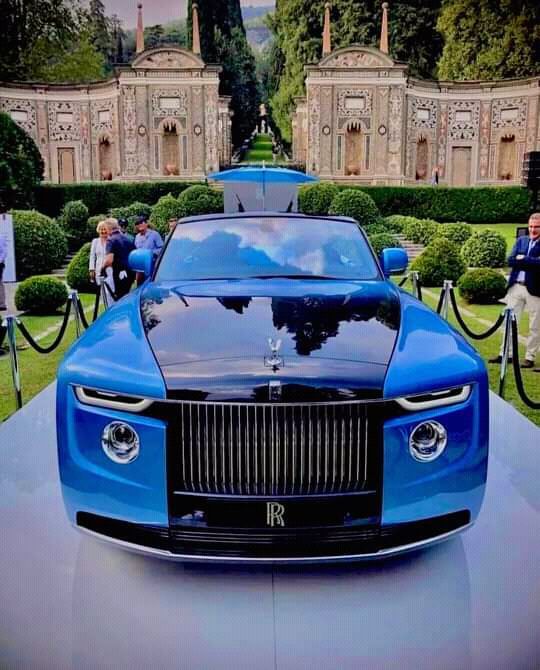
6. **Rolls-Royce Boat Tail**When the discussion turns to modern coachbuilt luxury, the Rolls-Royce Boat Tail undoubtedly leads the pack, setting an entirely new standard for bespoke automotive artistry. It exemplifies exclusivity and brand prestige on a whole new level, boasting a design that includes a truly unique rear deck and exquisite, handcrafted bespoke detailing throughout its form. Every curve and surface speaks of unparalleled luxury and personal expression, pushing the boundaries of what a car can be.
Rolls-Royce is rumored to have meticulously built only three examples of this magnificent creation, each costing in excess of a staggering USD 25 million. This bespoke masterpiece goes far beyond mere aesthetics; it boasts a fully customized hosting suite ingeniously integrated within the trunk, exemplifying the brand’s unwavering commitment to luxury and its dedication to tailoring every conceivable aspect to its impossibly discerning clientele.
The sheer opulence and absolute individuality of the Boat Tail decisively set it apart from virtually every other vehicle on the planet, making it a true automotive rarity in every sense of the word. You might, if you are exceedingly fortunate, catch a fleeting glimpse of this magnificent vehicle gracing the pristine lawns of Pebble Beach’s Concours d’Elegance or at private gatherings reserved exclusively for Rolls-Royce’s most illustrious clientele, where its commanding presence truly redefines bespoke automotive artistry and luxury.
Car Model Information: 2017 Toyota Camry SE
Name: Rolls-Royce Boat Tail
Manufacturer: Rolls-Royce Motor Cars
Production: 2 of 3, launch and presented on 27 May 2021
ModelYears: 2021, 2022
Assembly: Goodwood Plant
Designer: Daniel Koenigs
Class: Ultra-luxury car
BodyStyle: cabriolet
Doors: Suicide door
Layout: Front-engine, rear-wheel-drive layout
Platform: Rolls-Royce Architecture of Luxury platform
Related: Rolls-Royce Phantom (eighth generation)
Engine: BMW N74#N74B68,twin-turbo
Wheelbase: cvt
Length: cvt
Width: cvt
Height: [object Object]
Weight: [object Object]
Sp: uk
Categories: Articles with short description, CS1 errors: generic name, Commons category link from Wikidata, Retro-style automobiles, Rolls-Royce Motor Cars vehicles
Summary: The Rolls-Royce Boat Tail is a mid-sized luxury coach built grand tourer car made by Rolls-Royce Motor Cars. It is the world’s most expensive street legal new car, with a speculated price of US$28 million.
Get more information about: Rolls-Royce Boat Tail
Buying a high-performing used car >>>
Brand: Rolls-Royce Model: Boat Tail
Price: $15,995 Mileage: 41,772 mi.
Read more about: Soaring Horizons: A Deep Dive into the Samson Switchblade, the Revolutionary Street-Legal Flying Sports Car Redefining Travel
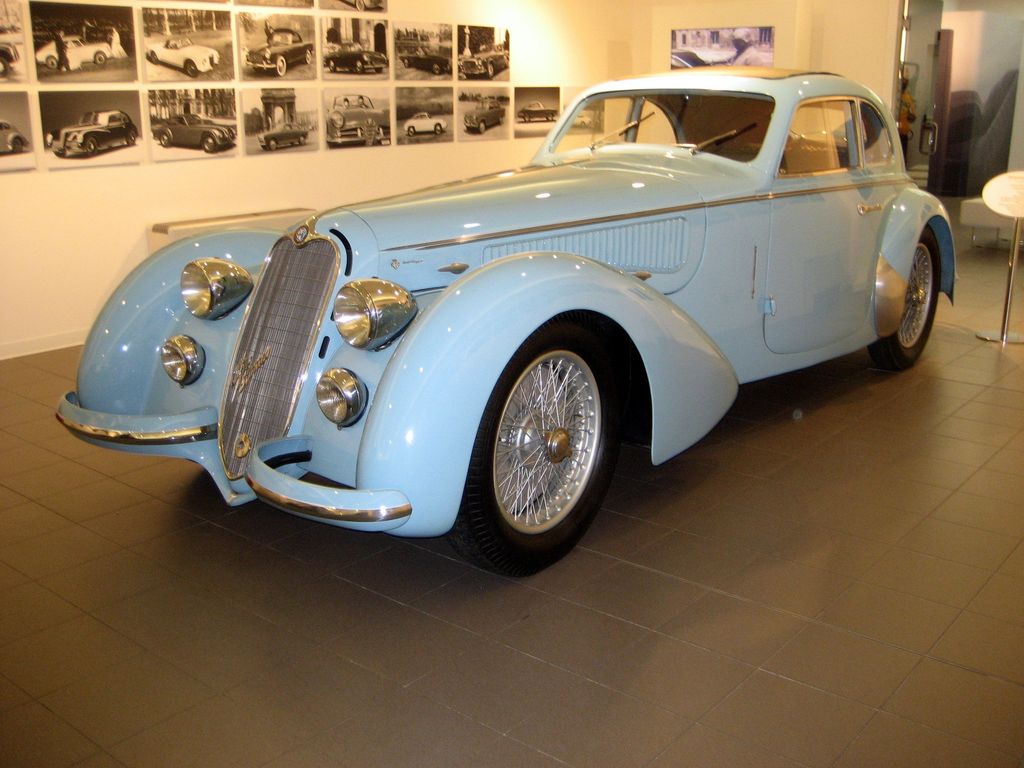
7. **Alfa Romeo 8C 2900B**Regarded universally as one of the most revered pre-war sports cars, the Alfa Romeo 8C 2900B is a mechanical and artistic marvel from a bygone era. It features a sophisticated eight-cylinder, twin-supercharged engine capable of delivering truly thrilling performance for its time. This Italian masterpiece represents a historical pinnacle of automotive engineering, seamlessly blending an artistic design ethos with formidable power, a combination that captivated enthusiasts of its period and continues to do so today.
Production of this exquisite vehicle was exceptionally limited, with only a small batch of Touring and Pininfarina-bodied cars meticulously produced. Each example stands as a profound testament to the unparalleled craftsmanship and innovative spirit that defined the pre-war automotive industry. These vehicles are not merely cars; they are cherished artifacts, embodying the elegance, mechanical sophistication, and racing heritage of an iconic era of automotive innovation.
Historically, models of the Alfa Romeo 8C 2900B have commanded staggering prices, having sold for well over USD 15 million in the past. As we look towards 2025, prime examples with documented matching numbers are highly anticipated to approach, and potentially even surpass, the USD 20 million mark. This escalating valuation is a clear indication of their enduring appeal, profound historical significance, and their status as essential pieces of automotive history. The Alfa Romeo 8C 2900B is frequently a centerpiece at top-tier Concours d’Elegance events, captivating onlookers with its timeless beauty and legendary heritage.
This part of the article will showcase the remaining eight iconic and ultra-rare automobiles, delving deeper into their unique design philosophies, legendary race-winning legacies, and their sustained, profound influence on the high-end collector’s market, cementing their status as true automotive masterpieces.
Car Model Information: 2017 Toyota Camry SE
Caption: Custom Alfa Romeo 8C (1936)
Name: Alfa Romeo 8C
Manufacturer: Alfa Romeo
Production: 1931–1939
Assembly: Portello (district of Milan)
Class: Luxury car,Sports car,Racing car
Layout: FR layout
Engine: Straight-8
Designer: Vittorio Jano
Categories: 24 Hours of Le Mans race cars, Alfa Romeo sports racing cars, Alfa Romeo vehicles, Articles with short description, Cars introduced in 1931
Summary: The Alfa Romeo 8C was a range of Alfa Romeo road, race and sports cars of the 1930s.
The 8C designates 8 cylinders, and originally a straight 8-cylinder engine. The Vittorio Jano designed 8C was Alfa Romeo’s primary racing engine from its introduction in 1931 to its retirement in 1939. In addition to the two-seater sports cars it was used in the world’s first genuine single-seat Grand Prix racing car, the Monoposto ‘Tipo B’ – P3 from 1932 onwards. In its later development it powered such vehicles as the twin-engined 1935 6.3-litre Bimotore, the 1935 3.8-litre Monoposto 8C 35 Type C, and the Alfa Romeo 8C 2900B Mille Miglia Roadster. It also powered top-of-the-range coach-built production models, including a Touring Spider and Touring Berlinetta.
In 2004 Alfa Romeo revived the 8C name for a V8-engined concept car. This eventually made it into production in 2007, as the 8C Competizione.
Get more information about: Alfa Romeo 8C
Buying a high-performing used car >>>
Brand: Alfa Romeo Model: 8C 2900B
Price: $15,995 Mileage: 41,772 mi.

8. **Ferrari P4/5 by Pininfarina**This singular creation, the Ferrari P4/5 by Pininfarina, stands as a testament to bespoke automotive artistry, commissioned by the discerning American collector James Glickenhaus. It is a stunning re-bodied Ferrari Enzo, meticulously crafted to echo the legendary lines of the classic 330 P4 race car. This unique amalgamation of past and present not only bridges eras but also exquisitely showcases the pinnacle of coachbuilt excellence, making it far more than just a car—it’s a rolling sculpture born from a passionate vision.
Its rarity is absolute; only one example of this extraordinary vehicle exists, securing its position as an unparalleled piece of automotive heritage. The P4/5 masterfully marries modern engineering prowess with the intoxicating allure and historical significance of 1960s racing, representing a bespoke dream made tangible. Should this one-of-a-kind masterpiece ever become available on the open market, conservative estimates suggest its value would run upward of USD 20 million, though its current owner has consistently expressed that it is unlikely to be sold anytime soon, further cementing its almost mythical status.
For those eager to witness this automotive marvel in person, opportunities, though infrequent, do arise. The Ferrari P4/5 by Pininfarina is occasionally displayed at prominent automotive shows or at exclusive, invitation-only Ferrari-related events, where its striking design and unparalleled provenance draw immense admiration from enthusiasts and experts alike, proving that true artistry transcends mere utility.
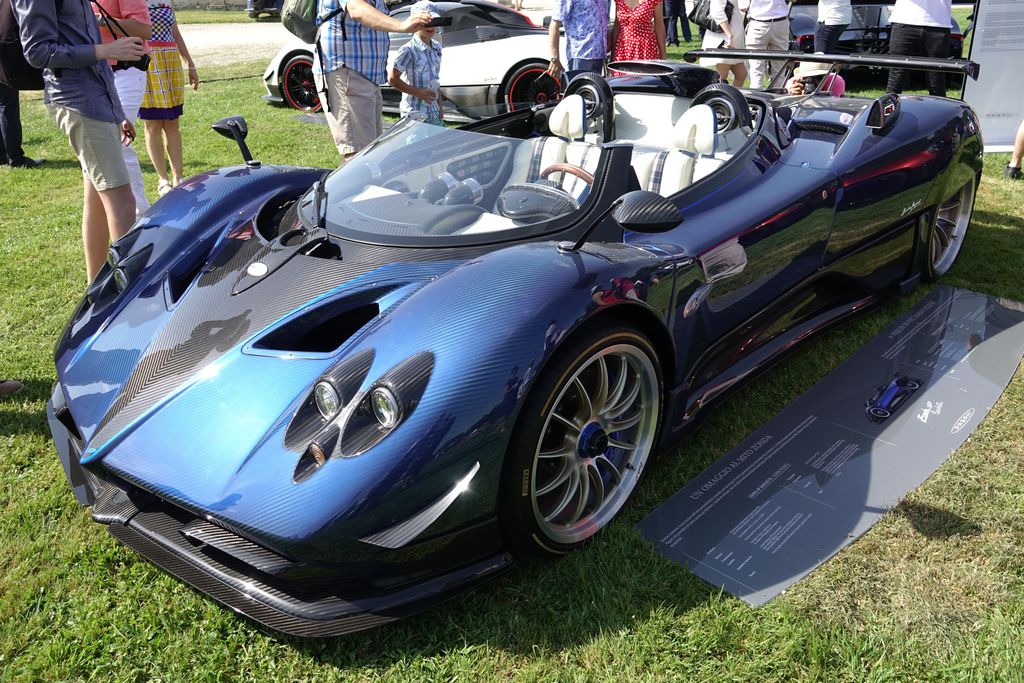
9. **Pagani Zonda HP Barchetta**In the realm of hypercars, where extreme performance meets artistic expression, Horacio Pagani’s artisanal approach to car making is deeply evident in every Zonda. However, the Pagani Zonda HP Barchetta elevates this philosophy to an entirely new dimension of exclusivity. Each of these vehicles is a coachbuilt masterpiece, demonstrating an obsessive attention to detail that sets it apart even within Pagani’s own illustrious lineup, embodying a raw, unfiltered driving experience.
Its production numbers underscore its profound rarity: only three HP Barchettas were ever produced. Each unit features unique, custom carbon-fiber elements and a distinctive open-top design that not only accentuates the vehicle’s stunning aesthetics but also allows for an unadulterated experience of the raw power delivered by its mighty V12 engine. The sheer scarcity and bespoke nature of these machines make them incredibly desirable.
The last known transaction for an HP Barchetta reportedly hovered around USD 15 million, reflecting its highly coveted status. By 2025, automotive valuation experts anticipate these values will escalate further, potentially surpassing the USD 20 million mark, driven by their unparalleled exclusivity and the burgeoning demand for unique hypercars. These automotive artworks are typically showcased by their owners at exclusive brand-sponsored track days or highly private, invitation-only events, offering rare glimpses of true automotive unobtainium.
Read more about: Journey into Rarity: Uncovering the World’s Most Exclusive Car Engines and Models
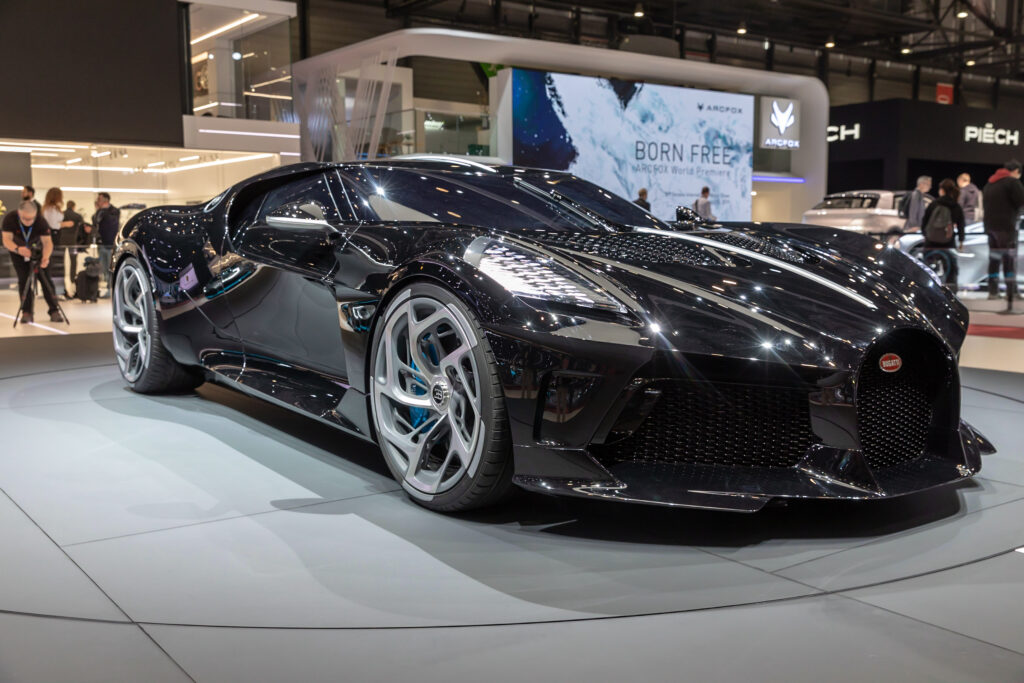
10. **Bugatti La Voiture Noire**The modern era of Bugatti continues the marque’s profound tradition of prestige and unparalleled automotive excellence, and the Bugatti La Voiture Noire stands as the ultimate contemporary embodiment of this legacy. Introduced to the world in 2019, this singular creation serves as a profound and evocative homage to the legendary Type 57 SC Atlantic, reinterpreting its timeless elegance with cutting-edge contemporary aesthetics and groundbreaking engineering. It is more than a car; it is a statement—a piece of automotive haute couture.
The production status of the La Voiture Noire is unequivocally unique: just one example was meticulously produced, making it an unrivaled and singular statement piece within the entire Bugatti lineup and arguably the automotive world at large. This unparalleled scarcity ensures its place at the very pinnacle of desirability. Initially sold for a staggering EUR 11 million before taxes, its value on the private market is highly anticipated to have appreciated significantly by 2025, with estimates suggesting it could easily exceed USD 15 million or even higher, reflecting its status as a one-off masterpiece.
Witnessing the Bugatti La Voiture Noire in person is an exceptionally rare privilege, akin to glimpsing a fleeting automotive unicorn. Its appearances are typically reserved for the most exclusive Bugatti-sponsored events or highly private, invitation-only showings, underscoring its unparalleled exclusivity. This vehicle not only redefines luxury but also stands as a testament to bespoke engineering and design, an automotive sculpture meant for the most discerning connoisseurs.
Car Model Information: 2017 Toyota Camry SE
Name: Bugatti Chiron
Manufacturer: Bugatti Automobiles
Production: 2016 – 2024
Assembly: Molsheim
Class: Sports car
BodyStyle: coupé
Related: unbulleted list
Layout: Mid-engine, four-wheel-drive layout,All-wheel drive vehicle
Engine: 8.0 L
Abbr: on
Powerout: unbulleted list
Order: flip (est) (Chiron Sport)
Transmission: dual-clutch transmission,automatic transmission
Wheelbase: 2711 mm
Length: 4544 mm
Width: 2038 mm
Height: 1212 mm
Weight: unbulleted list
Sp: uk
Predecessor: unbulleted list
Successor: unbulleted list
Designer: unbulleted list
Categories: All articles with unsourced statements, Articles with short description, Articles with unsourced statements from December 2022, Bugatti automobiles, CS1 German-language sources (de)
Summary: The Bugatti Chiron is a mid-engine two-seater sports car designed and developed in Germany by Bugatti Engineering GmbH. It was manufactured in Molsheim, France, by French automobile manufacturer Bugatti Automobiles S.A.S. The successor to the Bugatti Veyron, the Chiron was first shown at the Geneva Motor Show on 1 March 2016. The car’s design was initially previewed with the Bugatti Vision Gran Turismo concept car unveiled at the 2015 Frankfurt Auto Show.
The car is named after the Monégasque driver Louis Chiron. The car shares the name with the 1999 Bugatti 18/3 Chiron concept car.
Get more information about: Bugatti Chiron
Buying a high-performing used car >>>
Brand: Bugatti Model: La Voiture Noire
Price: $15,995 Mileage: 41,772 mi.
Read more about: Million Dollar Rides: The 10 Most Expensive European Cars & Future Luxury Trends

11. **Jaguar XJ13**The Jaguar XJ13 occupies a truly unique and almost mythical place in British automotive history. Conceived and meticulously built as a mid-engine prototype specifically intended to challenge at the arduous Le Mans endurance race, fate intervened, and it never actually competed professionally. Despite its lack of racing provenance, its historical significance is monumental, stemming from its pioneering role as Britain’s very first serious attempt at such a radical mid-engine layout within a sports prototype, pushing the boundaries of automotive design.
Its rarity is absolute; only one official example of the XJ13 was ever constructed by Jaguar. Tragically, this lone masterpiece suffered a significant crash during filming in 1971, which could have spelled its end. However, through painstaking and meticulous restoration efforts, this iconic vehicle was brought back to its former glory, a testament to its enduring legacy and the dedication of those who recognized its importance. The sheer uniqueness and historical narrative of the XJ13 contribute immensely to its almost incalculable value.
While the XJ13 is not available for public sale, experts speculate that if it were ever to appear on the market, it could command a breathtaking price of up to USD 15 million or even more, reflecting its status as a singular piece of British motorsport heritage. For enthusiasts, the opportunity to see this automotive icon is typically found at Jaguar’s heritage facilities in the UK or at special, curated exhibits celebrating the profound advancements in British automotive engineering and design, where its sleek lines and formidable presence continue to captivate.
Read more about: 19 Legendary Cars That Defined the Swinging 60s
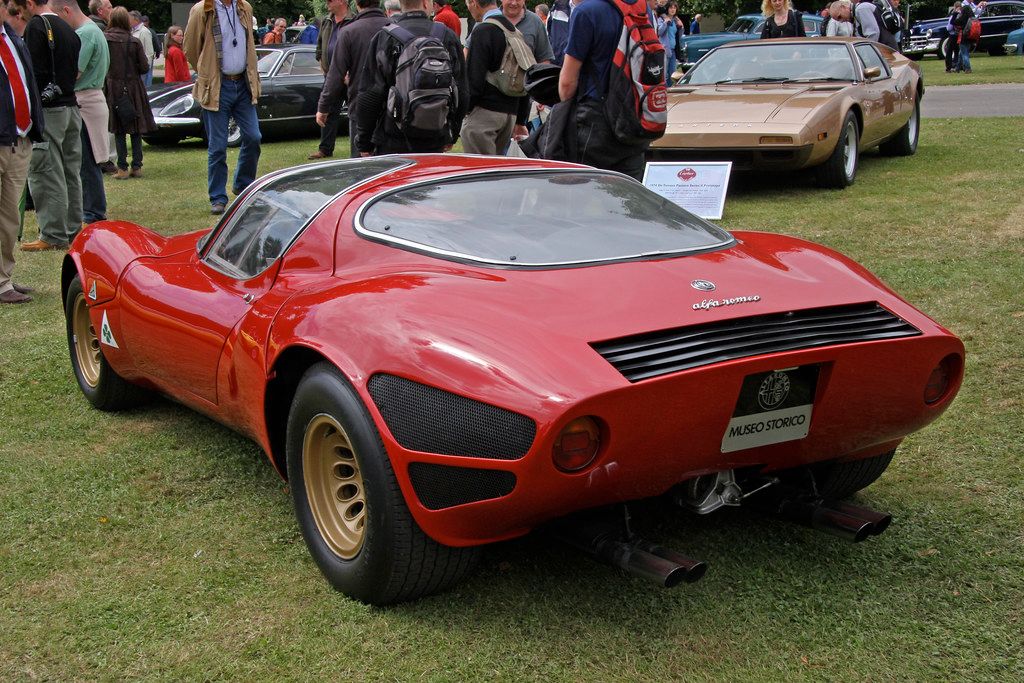
12. **Alfa Romeo 33 Stradale**The Alfa Romeo 33 Stradale is an undisputed timeless Italian classic, revered not merely for its captivating aesthetics but also for being an engineering marvel of the late 1960s. This extraordinary vehicle was far ahead of its time, featuring a sophisticated naturally aspirated V8 engine that delivered exhilarating performance and groundbreaking gullwing doors that seemed to defy convention. It represents a peak period of artistic and mechanical synergy for Alfa Romeo, a blend of beauty and beast.
Its exclusivity is profound, adding significantly to its allure; only 18 examples of the 33 Stradale were ever painstakingly made, each meticulously crafted by hand. This extreme scarcity, combined with its innovative design and formidable performance, elevates each example to a revered status as a true automotive artifact. The detailed craftsmanship and bespoke nature of these machines embody the spirit of a golden age of Italian motoring, making them highly sought after by discerning collectors worldwide.
The market for these unparalleled machines consistently reflects their desirability. One notable example sold for approximately EUR 10 million in 2023, showcasing the immense value attributed to such a rare piece of history. By 2025, values for pristine examples of the Alfa Romeo 33 Stradale are widely expected to climb even further, a clear indication of the car’s enduring exclusivity and undeniable design brilliance. These automotive gems occasionally make an appearance at high-end automotive collectibles exhibitions, especially those that focus on classic car auction trends, captivating onlookers with their graceful lines and legendary heritage.
Car Model Information: 2017 Toyota Camry SE
Name: Alfa Romeo 33 Stradale
Manufacturer: Alfa Romeo
Production: November 1967 – March 1969,18 produced
Assembly: Milan
Designer: Franco Scaglione
Class: Sports car
BodyStyle: coupé
Related: Alfa Romeo Tipo 33
Layout: Rear mid-engine, rear-wheel drive layout
Engine: V8 engine
Transmission: Colotti Trasmissioni,Manual transmission
Wheelbase: 2350 mm
Abbr: on
Length: 3970 mm
Width: 1710 mm
Height: 991 mm
Weight: 700 kg
Successor: Alfa Romeo 33 Stradale (2023)
Doors: Butterfly doors
Categories: 1960s cars, Alfa Romeo vehicles, All articles with unsourced statements, Articles with short description, Articles with unsourced statements from January 2023
Summary: The Alfa Romeo 33 Stradale is a mid-engine sports car built by Italian automobile manufacturer Alfa Romeo. It was the fastest commercially available car for the standing kilometer upon its introduction. 18 examples were produced between 1967 and 1969. “Stradale” (Italian for “road-going”) is a term often used by Italian car manufacturers to indicate a street-legal version of a racing car; indeed the 33 Stradale was derived from the Tipo 33 sports prototype. Built in an attempt by Alfa Romeo to make some of its racing technology available to the public, it was also the most expensive automobile for sale to the public in 1968 at US$17,000 (equivalent to $153,700 in 2024).
Get more information about: Alfa Romeo 33 Stradale
Buying a high-performing used car >>>
Brand: Alfa Romeo Model: 33 Stradale
Price: $15,995 Mileage: 41,772 mi.
Read more about: Journey into Rarity: Uncovering the World’s Most Exclusive Car Engines and Models
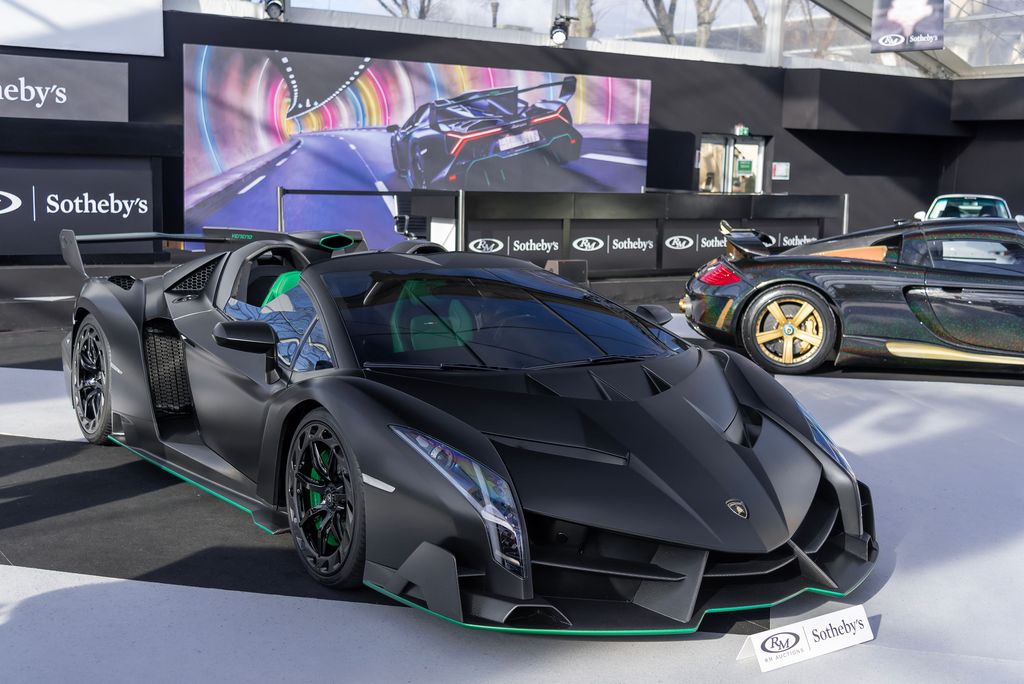
13. **Lamborghini Veneno Roadster**The Lamborghini Veneno Roadster truly embodies the essence of a modern, limited-edition supercar—an ultra-exclusive vehicle engineered to aggressively push the boundaries of both style and aerodynamic performance. Its foundation is a state-of-the-art carbon monocoque chassis, which bestows upon it the feather-light agility and razor-sharp handling for which Lamborghini is globally famed. This is a machine designed to dominate both visually and dynamically, a bold statement of automotive intent.
The rarity of the Veneno Roadster is striking; a mere nine examples were meticulously manufactured in 2014, each one flaunting radical design elements characterized by extreme body angles and cutting-edge aerodynamics. This extremely limited production, coupled with its aggressive styling and immense power, ensures its highly coveted status among high-net-worth collectors who seek the absolute pinnacle of automotive exclusivity. The Veneno Roadster is not just a car; it’s a piece of kinetic art.
In terms of market value, the Lamborghini Veneno Roadster’s pricing for 2025 is consistently projected to surpass the USD 10 million mark, a figure that powerfully reflects its unique desirability and ultra-collectible status. While sightings are indeed infrequent, enthusiasts might occasionally find one gracing specialized Lamborghini dealer events or making a rare appearance at major vintage automotive auctions, where its unmistakable presence commands attention and admiration from all who witness this modern icon.
Car Model Information: 2017 Toyota Camry SE
Name: Lamborghini Veneno
Manufacturer: Lamborghini
Designer: unbulleted list
Production: 2013–2014,(4 coupés, 9 roadsters)
BodyStyle: unbulleted list
Engine: Lamborghini V12#second generation,V12 engine
Powerout: 750 PS
Abbr: on (Coupe; dry)
Assembly: Sant’Agata Bolognese
Related: Lamborghini Aventador
Transmission: electrohydraulic manual transmission
Class: Sports car
Length: 5020 mm
Width: 2075 mm
Height: 1165 mm
Wheelbase: 2700 mm
Weight: 1490 kg
Doors: Scissor doors
Layout: Mid-engine, four-wheel-drive layout
Categories: Articles with short description, Cars introduced in 2013, Cars introduced in 2014, Commons category link is on Wikidata, Coupés
Summary: The Lamborghini Veneno (Spanish pronunciation: [beˈneno], lit. ‘poison’) is a limited production high performance sports car manufactured by Italian automobile manufacturer Lamborghini. Based on the Lamborghini Aventador, the Veneno was developed to celebrate Lamborghini’s 50th anniversary. It was introduced at the 2013 Geneva Motor Show. When introduced, it had a price of US$4,000,000, making it one of the most expensive production cars in the world.
Get more information about: Lamborghini Veneno
Buying a high-performing used car >>>
Brand: Lamborghini Model: Veneno Roadster
Price: $15,995 Mileage: 41,772 mi.
Read more about: Million Dollar Rides: The 10 Most Expensive European Cars & Future Luxury Trends

14. **Jaguar D-Type**The Jaguar D-Type is undeniably one of the most legendary British race cars ever conceived, renowned globally for its distinctive aerodynamic fin and its formidable record of multiple triumphant victories at the iconic Le Mans endurance race. Its design, pioneered in the mid-1950s, was remarkably advanced for its era, showcasing a groundbreaking monocoque construction approach that set new benchmarks for efficiency and performance in motorsport. It is a true testament to Jaguar’s engineering brilliance.
The D-Type’s rarity contributes significantly to its collectible status; approximately 87 units were originally made, encompassing both the short-nose and long-nose variants. Among these, the XKD models, boasting documented and proven race history, command the highest prices, a direct reflection of their significant contributions to motorsport heritage. Each surviving D-Type is a living piece of racing history, embodying the golden age of endurance competition.
As for its market valuation, D-Types with an impeccable and documented racing heritage are widely expected to fetch between USD 8 million and USD 10 million by 2025, with potential to exceed this range, driven by their enduring legacy and desirability. These iconic vehicles frequently make appearances at prestigious classic car auctions, particularly those events celebrating the rich tapestry of British racing success, where they continue to captivate audiences with their timeless elegance and formidable competitive spirit.
Car Model Information: 2017 Jaguar F-PACE 35t Prestige
Caption: Retromobile
Name: Jaguar D-Type
Designer: Malcolm Sayer
Manufacturer: Jaguar Cars
Production: 1954–1957
Class: Sports racing car
BodyStyle: Roadster (automobile)
Layout: Front-engine, rear-wheel-drive layout
Engine: cvt,Jaguar XK6 engine
Predecessor: Jaguar C-Type
Successor: Jaguar E-Type#Lightweight E-Type (1963–64, 2014–present)
Related: Jaguar XKSS
Categories: 24 Hours of Le Mans race cars, All articles needing additional references, All articles with unsourced statements, Articles needing additional references from April 2010, Articles with hAudio microformats
Summary: The Jaguar D-Type is a sports racing car that was produced by Jaguar Cars Ltd. between 1954 and 1957. Designed specifically to win the Le Mans 24-hour race, it shared the straight-6 XK engine and many mechanical components with its C-Type predecessor. Its structure, however, was radically different, with innovative monocoque construction and slippery aerodynamics that integrated aviation technology, including in some examples a distinctive vertical stabilizer.
Engine displacement began at 3.4 litres, was enlarged to 3.8 L in 1957, and reduced to 3.0 L in 1958 when Le Mans rules limited engines for sports racing cars to that maximum. D-Types won Le Mans in 1955, 1956 and 1957. After Jaguar temporarily retired from racing as a factory team, the company offered the remaining unfinished D-Types as street-legal XKSS versions, whose perfunctory road-going equipment made them eligible for production sports car races in America. In 1957 25 of these cars were in various stages of completion when a factory fire destroyed nine of them.
Total production is thought by some to have totaled 71 D-Types, including 18 for factory teams and 53 for privateers (plus an additional 16 D-Types were converted into road-legal XKSS versions). Jaguar is quoted as claiming it built 75 D-Types.
Get more information about: Jaguar D-Type
Buying a high-performing used car >>>
Brand: Jaguar Model: D-Type
Price: $11,999 Mileage: 86,585 mi.
Read more about: Nicolas Cage’s Mind-Blowing Car Collection: A Deep Dive into His Legendary Garage of Rarity and Raw Power

15. **Ford GT40 Prototype**The original Ford GT40 prototypes hold a truly legendary status in the annals of motorsport, meticulously developed with one singular, ambitious goal: to decisively dethrone the dominant Ferrari at the prestigious Le Mans endurance race. This audacious quest famously culminated in a historic triumph for Ford, securing an unprecedented four consecutive victories from 1966 to 1969. Among all the iterations, these initial prototypes are unequivocally the rarest, representing the genesis of an iconic racing dynasty.
Their production was incredibly limited, adding immensely to their exclusivity; fewer than a dozen prototypes were ever constructed, each distinguished by unique chassis code differences and representing crucial stages in the GT40’s evolutionary development. These early testbeds and development cars were instrumental in refining the ultimate race-winning formula, making them invaluable artifacts of automotive history and engineering innovation. Their raw, purposeful design reflects their singular mission.
In 2025, a Ford GT40 prototype with a documented Le Mans history, particularly one linked to the early development efforts, could quite easily command a price of USD 8 million or more, underscoring its profound historical significance and immense desirability among collectors. These automotive icons occasionally surface in high-profile vintage automotive auctions, drawing intense bidding. Alternatively, enthusiasts might find them prominently displayed at revered institutions such as the Henry Ford Museum in Dearborn, Michigan, where they stand as enduring symbols of American engineering grit and racing triumph.
As we conclude this journey through some of the most extraordinary and valuable automobiles ever crafted, it becomes abundantly clear that these machines are far more than mere modes of transportation. They stand as enduring masterpieces, embodying the pinnacle of heritage, the relentless pursuit of craftsmanship, and the profound historical significance of automotive progress. Whether one gravitates toward the raw, untamed racing pedigree of a storied Le Mans victor, the futuristic engineering of a bespoke hypercar, or the timeless elegance of a pre-war Italian masterpiece, each of these rare automobiles offers an unparalleled window into the fascinating evolution of rare car manufacturing and design philosophy.
The consistent ascent of their prices in 2025 is a dynamic narrative, fueled by an increasing, insatiable demand within the specialized collectors’ automobile market, their inherently limited production numbers, and the unwavering passion of enthusiasts who ceaselessly chase the allure of exclusivity and brand prestige. If fortune favors you with the opportunity to glimpse one of these automotive gems gracing the pristine lawns of a Concours d’Elegance or to peruse their detailed specifications during an exclusive vintage automotive auction, you will undoubtedly witness firsthand the potent power these cars possess to captivate, to inspire, and to fundamentally redefine what a vehicle can be.
Car Model Information: 1966 Ford GT40
Name: Ford GT40
Caption: Ford GT40 Mk.I in JWA Gulf Oil racing colors
Manufacturer: Ford Advanced Vehicles,John Wyer,Kar Kraft,Holman-Moody,Shelby American
Production: 1964–1969
Assembly: Slough,Los Angeles
Designer: Ron Bradshaw
Class: Group 4 (racing),Group 5 (racing),Group 6 (racing)
BodyStyle: coupé
Layout: MR layout
Engine: Cubic inch,289 CID (4737 cc) V-8,302 CID (4942 cc) V-8,427 CID (6997 cc) V-8
Transmission: Manual transmission
Wheelbase: 95 in
Abbr: on
Length: 160 in
Width: 70 in
Height: 40.5 in
Weight: convert
Successor: Ford P68
Sp: uk
Categories: 24 Hours of Le Mans race cars, All Wikipedia articles needing clarification, All articles needing additional references, All articles that may contain original research, All articles with specifically marked weasel-worded phrases
Summary: The Ford GT40 is a high-performance mid-engined racing car originally designed and built for and by the Ford Motor Company to compete in 1960s European endurance racing. Its specific impetus was to beat Scuderia Ferrari, which had won the prestigious 24 Hours of Le Mans race for six years running from 1960 to 1965. Around 100 cars have been made, mostly as 289 cu in (4.7 L) V8-powered Mk Is, some sold to private teams or as road-legal Mk III cars.
The car debuted in 1964, with Ford winning World Championships categories from 1966 to 1968. The first Le Mans win came in 1966 with three 427 cu in (7.0 L) powered Mk.II prototypes crossing the finish line together, the second in 1967 by a similarly powered highly modified US-built Mk.IV “J-car” prototype. In order to lower ever-higher race top speeds, a rule change from 1968 onwards limited prototypes to 3.0 litre Formula 1 engines; a loophole, however, allowed the private JW “Gulf Oil” team to win at Le Mans in 1968 and 1969 running a Mk.I with a 5.0 litre engine.
The GT40 effort began in Britain in the early 1960s when Ford Advanced Vehicles began to build the Mk I, based upon the British Lola Mk6, in Slough, UK. After disappointing race results, the engineering team was moved in 1964 to Dearborn, Michigan, US, to design and build cars by its advanced developer, Kar Kraft. All chassis versions were powered by a series of American-built Ford V8 OHV engines modified for racing.
In the 1966 Le Mans, the GT40 Mk II car broke Ferrari’s winning streak, making Ford the first American manufacturer to win a major European race since Jimmy Murphy’s Duesenberg in the 1921 French Grand Prix. In the 1967 Le Mans, the GT40 Mk IV car became the only car developed and assembled entirely (both chassis and engine) in the United States to achieve the overall win at Le Mans.
Get more information about: Ford GT40
Buying a high-performing used car >>>
Brand: Ford Model: GT40
Price: $110,000 Mileage: 13,350 mi.
Read more about: The Rarest and Most Expensive American Muscle Cars Ever Sold
For some, the profound allure lies in the meticulous verification of matching numbers and the intricate process of VIN decoding, connecting them intimately to a car’s unique life story. For others, it is the visceral thrill of a drive, or the sheer, breathtaking artistry of a coachbuilt design that truly resonates. No matter the individual motivation, these exceptional cars stand as an indelible testament to the boundless achievements of the automotive world—what happens when visionary engineers, inspired designers, and audacious dreamers converge to meticulously build the truly extraordinary, leaving an indelible mark on history that continues to inspire generations of enthusiasts across the globe.

